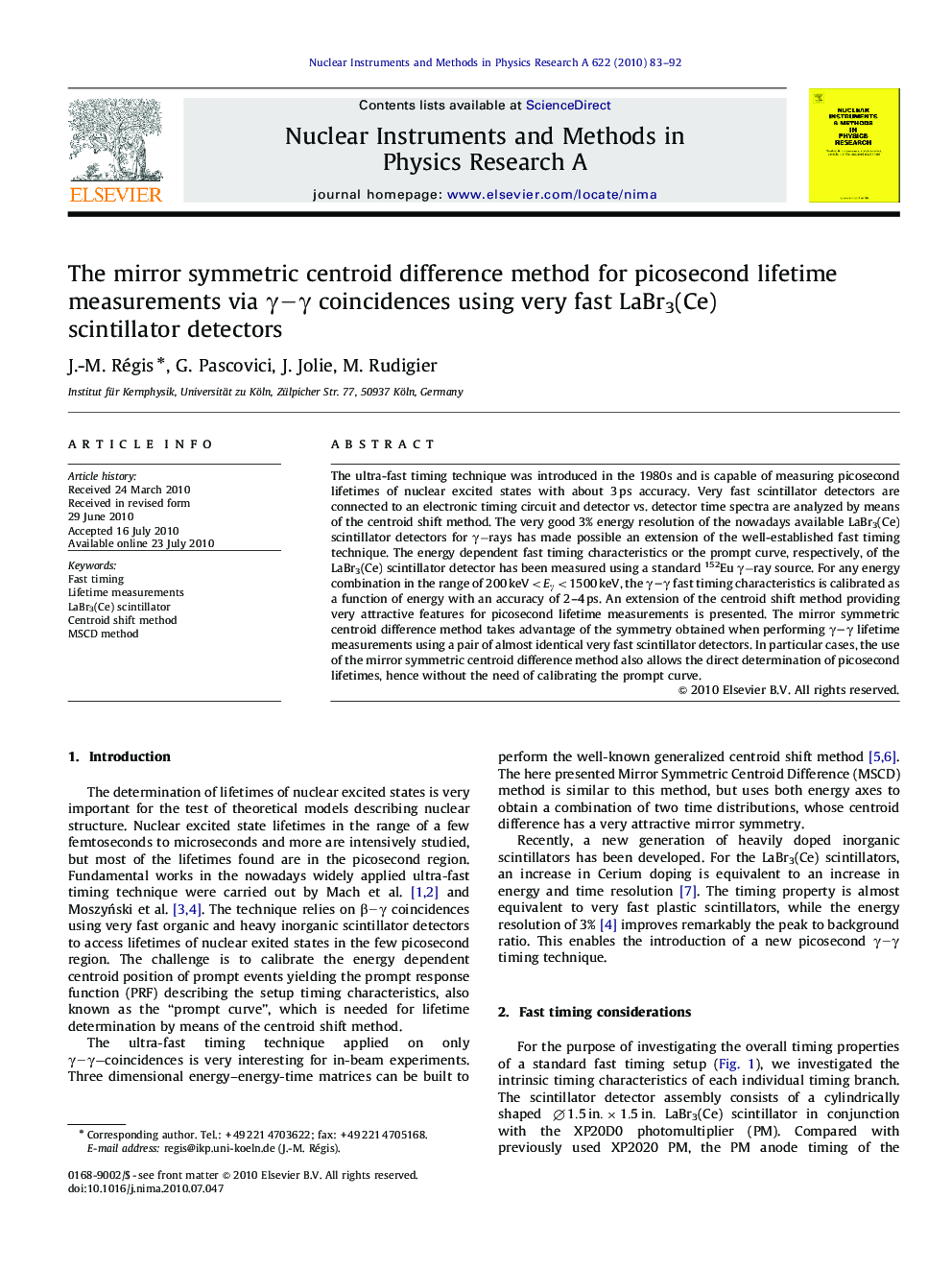| Article ID | Journal | Published Year | Pages | File Type |
|---|---|---|---|---|
| 10715867 | Nuclear Instruments and Methods in Physics Research Section A: Accelerators, Spectrometers, Detectors and Associated Equipment | 2010 | 10 Pages |
Abstract
The ultra-fast timing technique was introduced in the 1980s and is capable of measuring picosecond lifetimes of nuclear excited states with about 3 ps accuracy. Very fast scintillator detectors are connected to an electronic timing circuit and detector vs. detector time spectra are analyzed by means of the centroid shift method. The very good 3% energy resolution of the nowadays available LaBr3(Ce) scintillator detectors for γ-rays has made possible an extension of the well-established fast timing technique. The energy dependent fast timing characteristics or the prompt curve, respectively, of the LaBr3(Ce) scintillator detector has been measured using a standard 152Eu γ-ray source. For any energy combination in the range of 200keV
Related Topics
Physical Sciences and Engineering
Physics and Astronomy
Instrumentation
Authors
J.-M. Régis, G. Pascovici, J. Jolie, M. Rudigier,
